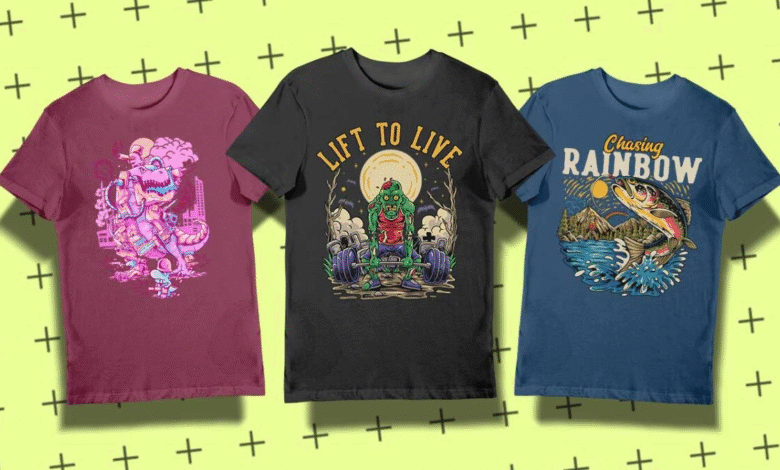From Screen Prints to DTF: Shifting Trends in Custom Apparel Production

The Rise of DTF Printing in the Apparel Industry
The world of custom apparel production is evolving rapidly, with new printing technologies redefining how creators bring their visions to life as finished products. Direct-to-film (DTF) printing, in particular, is gaining popularity as a high-performing alternative to older techniques. The DTF process brings vibrant, high-resolution prints onto textiles without the traditional hurdles associated with screen and direct-to-garment methods. The expanding capabilities of DTF have made it one of the hottest topics among shop owners and apparel decorators worldwide. Industry observers note that this shift reflects not only technological innovation but also customer demand for unique, on-demand options that were previously impossible.
Many print shops are embracing this shift as they seek the best commercial DTF printers to enhance output and quality. These new methods—powered by reliability, efficient workflows, and vibrant results—are democratizing the apparel production process. Both large and small operations now have access to the kind of creative expression and production speed once reserved for the most prominent players. Whether you’re an established business looking to innovate or a creative just starting your journey, DTF technology opens up a new realm of possibilities.
Comparing DTF and Traditional Screen Printing Techniques
Traditional screen printing has been a cornerstone of custom apparel for generations. It’s favored for its reliability in producing massive runs of shirts, hoodies, and specialty garments efficiently. The process, although robust, requires a series of meticulous steps. Setting up for a job means preparing separate screens for each color, aligning layers, and handling lengthy cleanup sessions. For simple, single-color logos or large orders in the thousands, screen printing delivers unbeatable economics and speed.
DTF, by comparison, offers a digital-first approach. There’s no screen burning, and intricate designs with fine detail or a broad color palette are no longer limitations. Print shops can now produce dazzling photo-quality images, gradients, and small-batch orders quickly and painlessly. As requests for rapid prototyping, pop-ups, and ultra-personalized items increase, DTF is becoming the solution for businesses seeking to meet evolving customer needs. Many successful operations now run both setups: using screen printing for bulk orders and DTF for short runs or when design complexity demands it. This multi-pronged strategy ensures every customer gets the proper technique for their project.
Benefits of Direct-to-Film for Modern Businesses
DTF printing isn’t just another trend—it’s a solution to many of the challenges facing decorators today. One of its most substantial advantages is the minimal setup: gone are the lengthy steps, such as screen creation and manual registration. By digitizing the process, even a single custom shirt can be produced cost-effectively, opening doors to new business models. According to Impressions Magazine, this flexibility is fueling a new digital era in apparel decoration, enabling decorators to accept one-off orders, operate online stores without carrying excess stock, and pivot quickly when trends shift overnight.
- Minimal setup time can significantly increase your shop’s output.
- The ability to profit from small, even single-piece, orders makes microbusinesses viable.
- No restrictions based on number of colors—perfect for detailed artwork, photos, and gradients.
- DTF transfers work well on cotton, polyester, blends, and many specialty fabrics, further increasing your product range.
- The process is easy to scale, so a small team can accomplish what once required a much larger staff.
These features have made DTF a vital tool for growing businesses, enabling them to adapt and remain competitive as their customers’ needs evolve.
Sustainability Considerations for Print Methods
Sustainable practices are more than a trend—they are now a business requirement for many customers and organizations. Traditional screen printing’s consumables—emulsions, inks, cleaning chemicals, and water—add to environmental impact, particularly for shops that manage large volumes. In response, decorators are scrutinizing every aspect of production, seeking ways to reduce waste and minimize the use of hazardous materials.
DTF processes offer immediate waste reduction for short runs by using only the exact amounts of film, ink, and powder needed for each order. This efficiency is desirable in an industry that is moving toward the production of ethical and sustainably sourced products. Further, continuous innovation is delivering printable films and adhesives that are safer and recyclable. Customers increasingly expect environmental responsibility to be part of their buying decision, and decorators who act now will find themselves well-positioned for the future.
Technological Advancements Powering the Shift
Technology is the driving force behind the ascent of DTF. Modern printers utilize advanced print heads, ink systems, and adhesive powders to ensure every transfer is accurate to design, durable, and soft to the touch. With fast-moving software improvements, print operators can color-match more consistently and automate much of the workflow, reducing errors, reprints, and downtime.
Innovations in materials science have also played a role. DTF films, now thinner and more flexible, yield finished apparel that feels close to retail-grade items. Durable, machine-washable powders keep designs looking sharp far longer, even after dozens of washes. Maintenance routines, print speeds, and machine footprint continue to improve, making it easier for even the smallest shops to compete technically.
Future Predictions for Apparel Decoration Methods
The coming years are poised to see even wider adoption of DTF technology. Industry watchers anticipate print speeds will increase even further, costs will decrease, and new specialty films will make it possible to print on almost anything. As e-commerce continues to grow, demand for on-demand personalization and rapid shipping is expected to skyrocket.
At the same time, traditional screen printing will continue to maintain a strong presence in the market, particularly for significant corporate events and seasonal promotions. However, the flexibility of DTF—enabling quick shifts to new products and markets—makes it a must-have for print shops looking to stay agile and resilient.
Steps to Getting Started with DTF in Your Shop
- Research and compare different DTF printers, considering factors such as production speed, print quality, ongoing maintenance requirements, and supply chain reliability.
- Order sample prints or starter kits to evaluate first-hand how DTF performs on all your target materials.
- Integrate DTF into your digital workflow by updating design templates and trialing small orders to identify and resolve bottlenecks.
- Train your production team or partners on proper image prep, printer calibration, and finishing for customer-ready results.
- Create marketing collateral that highlights DTF’s benefits for both local and online customers, including no minimum orders and fast turnaround times.
- Seek early feedback and document best practices, so every new order is an opportunity to improve your offering.
With a deliberate approach, print shops can transition to DTF smoothly and unlock new growth with minimal risk.
Conclusion
In conclusion, Direct-to-Film (DTF) printing is reshaping the custom apparel landscape with its unmatched versatility, efficiency, and quality. From its streamlined setup and ability to handle intricate, full-color designs to its scalability and eco-conscious potential, DTF offers a compelling solution for both new and established businesses. As real-world success stories and rapid technological advancements continue to demonstrate its value, DTF is no longer just an emerging trend—it’s a transformative force in the print industry. By thoughtfully integrating this technology, print shops can position themselves to meet evolving customer demands, expand their product offerings, and thrive in a fast-paced, customization-driven market.




